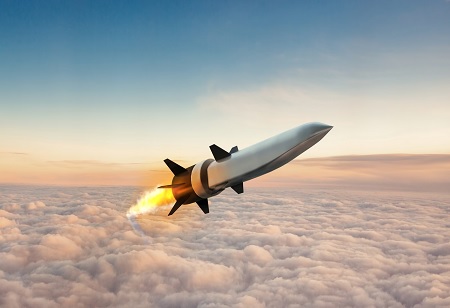
US, and Japan Collaborate on Hypersonic Interceptor

 The United States and Japan have signed a collaborative agreement to jointly develop a hypersonic missile defence system aimed at countering hypersonic threats during the glide phase of flight. This agreement, announced by both the Missile Defense Agency (MDA) and Japan’s Defense Ministry, follows over a year of discussions between the two nations. The development process for the Glide Phase Interceptor (GPI) is still in its early stages, with the MDA anticipating initial deployment around the mid-2030s. Raytheon Technologies and Northrop Grumman, selected in June 2022, are competing to design the GPI.
The United States and Japan have signed a collaborative agreement to jointly develop a hypersonic missile defence system aimed at countering hypersonic threats during the glide phase of flight. This agreement, announced by both the Missile Defense Agency (MDA) and Japan’s Defense Ministry, follows over a year of discussions between the two nations. The development process for the Glide Phase Interceptor (GPI) is still in its early stages, with the MDA anticipating initial deployment around the mid-2030s. Raytheon Technologies and Northrop Grumman, selected in June 2022, are competing to design the GPI.
During the August 2023 Japan-U.S. summit, both governments confirmed their collaboration on the cooperative development of GPI. The interceptors will be tailored to fit into the U.S. Navy’s Aegis-equipped destroyers, firing from the standard vertical launching system and integrated with the modified Baseline 9 Aegis Weapon System. Neutralizing hypersonic threats in the glide phase presents technical challenges due to their high speed and manoeuvrability, making trajectory prediction difficult. The GPI Cooperative Development Project Arrangement falls under the U.S.-Japan bilateral Memorandum of Understanding for Research, Development, Test, and Evaluation projects.
The development of GPI will be led by the MDA, with Japan taking charge of rocket motors and propulsion components. This collaboration aims to enhance regional deterrence and strengthen longstanding missile defence cooperation between the two countries. Both parties emphasize the urgency of bolstering interception capabilities against evolving missile technologies, particularly hypersonic weapons, which have seen significant advancements in the vicinity of Japan.
The Japanese MOD underscores the critical need to enhance interception capabilities against these missiles. Overall, the agreement signifies a concerted effort by the United States and Japan to address emerging security challenges posed by hypersonic threats, reinforcing their commitment to regional security and defence cooperation.

